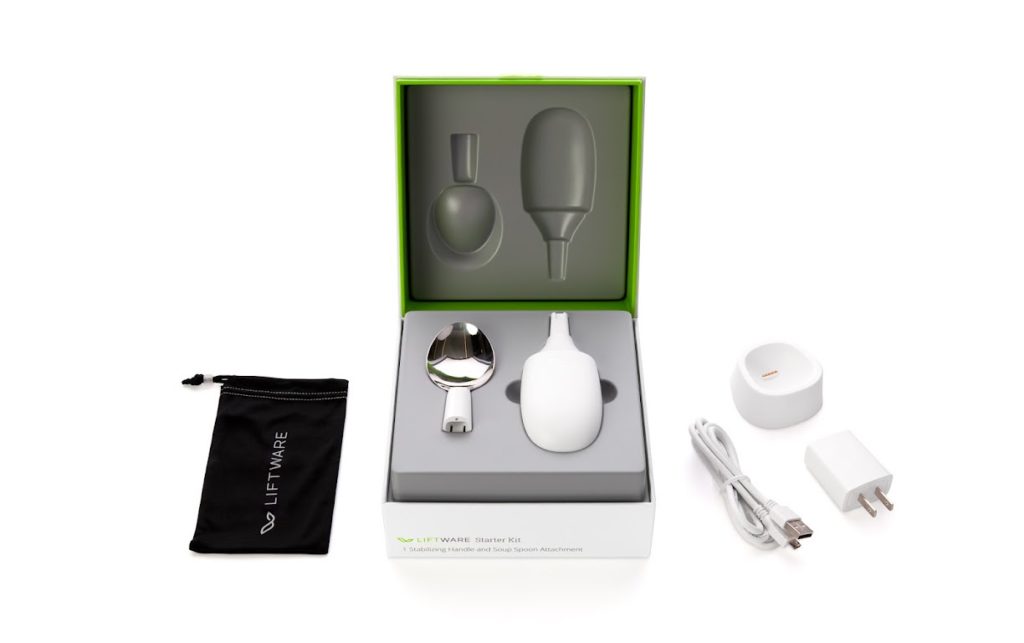Liftware Steady is an electronic stabilizing handle with a selection of attachments that include a soup spoon, everyday spoon, fork, and spork. Liftware Steady is designed to help people suffering from hand tremors, which may be related to Parkinson’s disease or essential tremor, eat more easily. The stabilizing handle contains sensors that detect hand motion and a small onboard computer that distinguishes unwanted tremor from the intended movement of the hand. To stabilize the utensil, the computer directs two motors in the handle to move the utensil attachment in the opposite direction of any detected tremor.
Features
Liftware Steady includes two parts: a stabilizing handle and a utensil attachment. Connect the attachment to turn it on automatically, enjoy your meal, then simply use the dock to charge. The utensil attachments can be washed in the dishwasher or be cleaned by hand with a sponge, mild detergent, and warm water. However, the computerized handle cannot be washed in a dishwasher or submerged in water. It is recommended to wipe the computerized handle with a damp sponge or antibacterial wipes.
A non-invasive handheld assistive device to accommodate essential tremor
Essential tremor affects about 7 million people in the United States. It’s at least eight times more common than Parkinson’s. The essential tremor is a tremor in both hands and arms. Parkinson’s disease is a progressive condition that causes problems with movement. It affects about 1 percent of people over the age of 60. The social symptoms of Parkinson’s disease and essential tremor often directly lead to feelings of loneliness and social isolation. The emergence of social symptoms is common and disruptive to peoples’ lives, as feelings of stigma, dehumanization, and loneliness might lead people to withdraw from social situations. Tremors can affect the way you carry out a broad range of everyday activities, from working and driving, to simply eating and brushing your teeth. Tremor causes people regularly to spill food while eating, or leads people to bow their heads at least halfway towards their utensil to meet food. This is where Liftware Steady comes in handy. Users don’t have to avoid eating out and can maintain their social activities.
This device aims at a functional solutions model through which users have more control over their bodily movements. This device uses Active Cancellation of Tremor (ACT) technology, and a noninvasive handheld ACT device can reduce tremor amplitude and severity for eating and transferring tasks in individuals with essential tremor and Parkinson’s disease. Liftware Steady overcomes the social model of disability by allowing users to be more active socially and not feel the isolated cause of the disability.

Conclusion
Liftware Steady is a prime example of how to build products with accessibility in mind. It addresses an issue a large portion of the geriatric population faces but is usually deemed as a ‘aw what to do’ problem – a problem able people don’t consider to be a major one. Through a simple mechanism and economical materials, the robotic handle is able to give such disabled individuals a chance to perform such a basic task without fear of embarrassment and low confidence. In my opinion, Liftware Steady should be viewed as a model to innovate products that don’t just cater to the general able public and are focused on improving inclusivity and the general lives of its user base.

